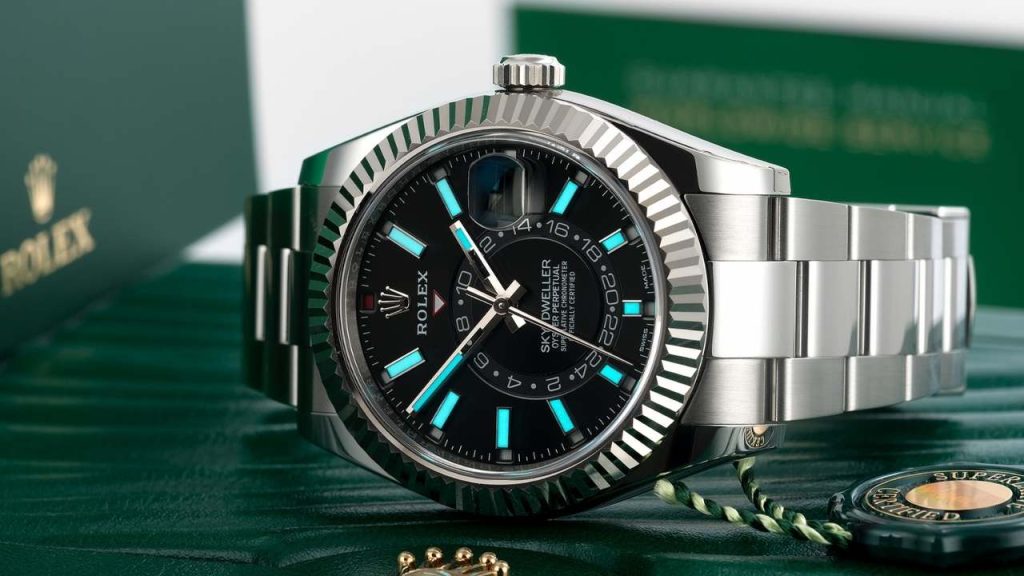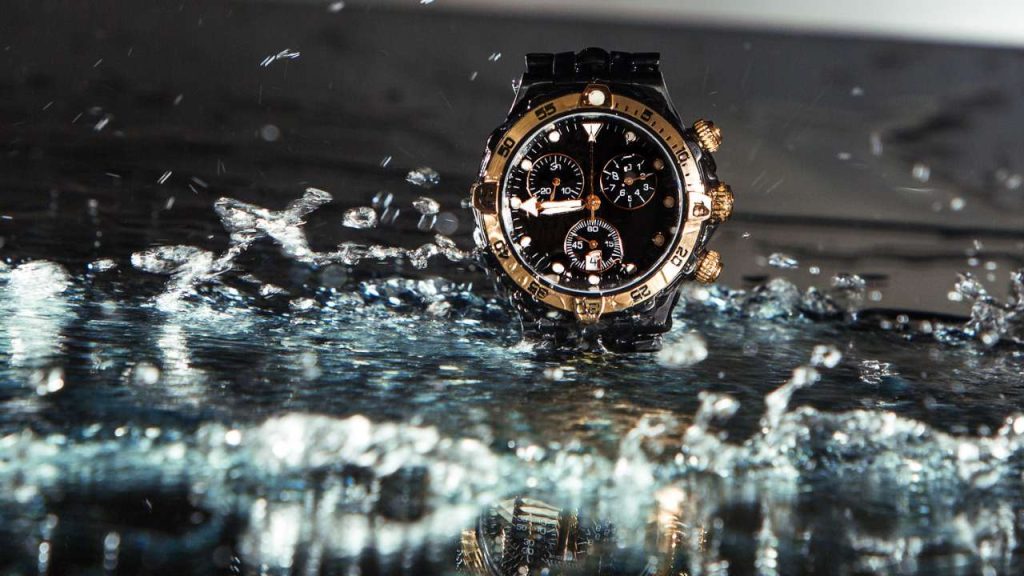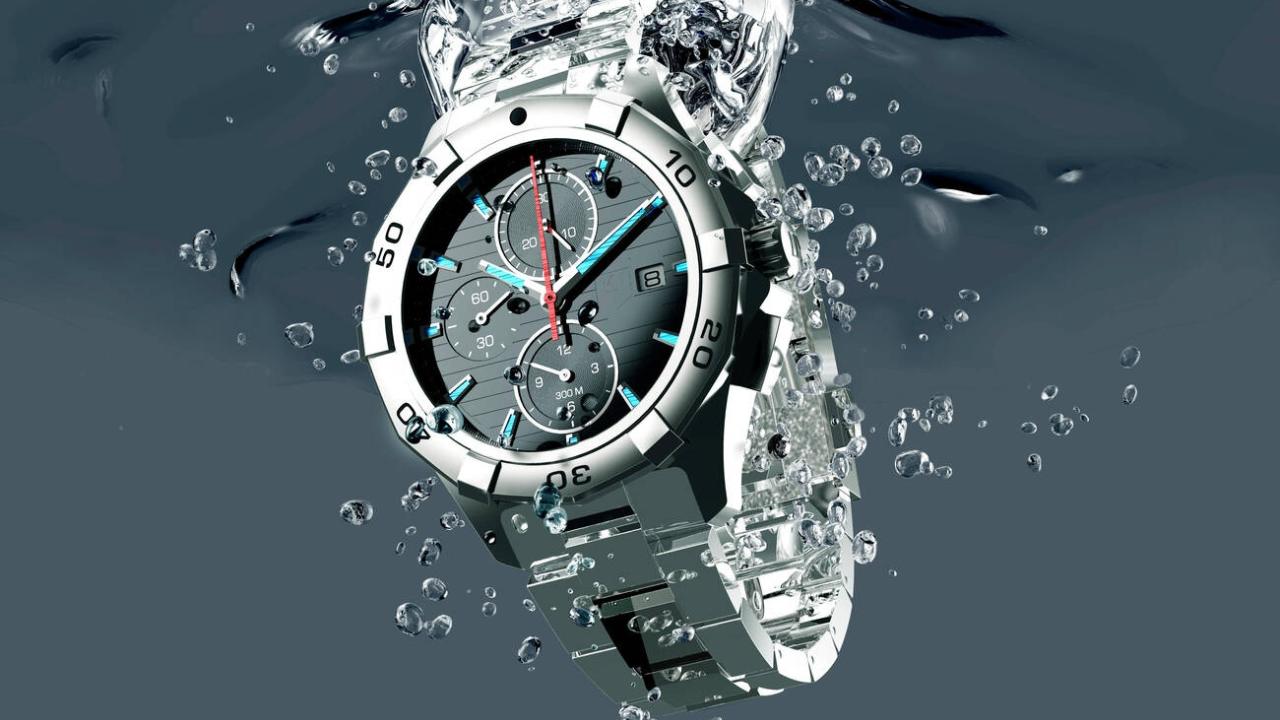If you are in the market to buy any watch, more specifically a diver’s watch, water-resistant and waterproof watches will come your way.
Watch Geeks use these terms interchangeably, and you’ll be led to think these are the same.
However, that’s not the case.
Water-resistant watches withstand some exposure to moisture or water but are not completely sealed off from it.
They may resist light splashes or rain but are unsuitable for swimming or diving.
In comparison, waterproof watches can withstand complete submersion in water at certain depths without allowing moisture to seep inside.
This is the primary difference, with plenty of nuances hidden.
Let’s dive in (pun intended)!
Table of Contents
Water Resistant vs. Waterproof Watches
Let’s be honest: regardless of your watch type, water is the biggest enemy of any watch.
Even a small amount of water can cause moisture, initiating the corrosion process (in automatic watches) and damaging the circuit (in quartz).
So, the requirement for a protection system against water is inevitable. So, watchmakers come with things terms like waterproof and water resistance.

However, there is no rocket science here.
Water resistant means a watch is ONLY resistant to moisture, water splashes, and nothing else.
Don’t expect the water-resistant watch (not labeled with depth rating) to keep water out while diving or swimming.
On the other hand, waterproof watches are a different deal. These are labeled with a specific depth and time limit for their resistance.
It’s because waterproof watches are sealed with gaskets and other advanced techniques to keep all moisture out.
They are designed to withstand the pressure of being submerged in water for a specific time at a certain depth without any damage.
Caveats in Water Resistant vs. Waterproof Watches
The public awareness of waterproof vs. water-resistant has been abused a lot.
For instance, on paper, water-resistant watches can only handle light contact with water.
In comparison, waterproof watches would practically be impenetrable.
However, there is no such thing as a completely waterproof watch.
Watches can have features like screw-down crowns and case backs, rubber or silicone gaskets, and double or triple-sealing systems.
These features provide additional resistance against water, but they never become 100% waterproof.
Watchmakers don’t even use the term waterproof.
Instead, they mention water resistance with the depth rating.
Many think it is a marketing tactic to mislead customers, as old watches are used to be called waterproof.
However, watch brands are not always the culprit here.

The International Organization of Standardization, by ISO 2281 regulations, has banned the term “waterproof” in describing a watch.
Instead, the standard uses “water-resistant,” with a specific depth rating.
There is another ISO 6425 standard, which considers watches suitable for diving.
These watches have to pass the ISO 2281 test plus additional rigorous tests like saltwater and chlorine exposure.
Even these watches are not called waterproof.
Water Resistance Ratings
Now, you know that water resistance is a more prevalent term than waterproofing; there are different water residence levels or ratings.
These ratings mean how much pressure a watch can withstand without water seeping in.
It can dictate the level of water resistance your watch needs.

There are three ways to explain the water resistance rating: in meters, ATMs (atmospheres), and bars.
All three terms are interchangeable and mean the same thing – how deep the watch can go without compromising its water resistance.
However, these ratings are not an absolute measure of a watch’s ability to resist water.
They only provide a general guideline for understanding the level of protection your watch can offer.
3 ATM/ 3 bars/30 meters: This is the most common water-resistance rating. It means your watch can withstand water splashes, such as washing hands or light rain.
It’s not suitable for swimming or any other water activities.
5 ATM/ 5 bars/50 meters: Watches with this rating can be used while showering or swimming in shallow waters.
However, they are not suitable for diving or snorkeling.
10 ATM/ 10 bars/100 meters: This rating indicates that a watch can be used for water sports and swimming activities.
It’s also suitable for snorkeling and light diving.
Sometimes, these watches feature a screw-down crown. It provides an extra layer of protection against water entering the watch through the winding stem tube.
20 ATM/ 20 bars/200 meters: This is the water-resistance rating starting territory of diver watches.
It’s suitable for serious diving activities but not for deep-sea diving.
100 ATM/100 Bar/1000 meters: This rating is rare and is only seen on high-end dive watches like Rolex Sea-Dweller Deepsea.
It can easily withstand deep-sea diving pressure and is suitable for professional divers.
Considerations of Water Resistance Ratings
There are many other things to note here.
Firstly, the depth rating mentioned on water-resistant/waterproof watches is based on laboratory tests using still and pure water.
In real-life scenarios, the depth rating may not hold up with varying types of water (saltwater or chlorinated water), temperature changes, and different movements of your arm while swimming.
Also, waterproofing is not a permanent feature of watches. Over time, the gaskets and seals that keep moisture out may wear out and become less effective.
So, it’s essential to get your waterproof watch checked and serviced regularly to maintain its level of protection.
Even at serving, watches are not tested with “Active Submersion,” a term for simulating real-life surfacing and submersion.
So, while your watch may have a high depth rating, it won’t be as water-resistant as told by the retailers.
Only a few watch brands, like Rolex and Omega, live up to “water resistance” with their rigorous testing processes and high-quality materials.
Water Resistant vs. Waterproof Watches: Frequently Asked Questions
How do I know if my watch is truly water-resistant?
Look for the depth rating on your watch’s specifications. Make sure to purchase from reputable brands that have rigorous testing processes for their water-resistant watches.
Can I shower with a water-resistant watch?
It’s generally safe to shower with a watch that has a water resistance rating of 30 meters or more.
However, hot showers and harsh chemicals may damage the gaskets and seals over time, reducing water resistance.
How often should I get my water-resistant watch checked and serviced?
It’s recommended to get your water-resistant watch serviced every 3-5 years. Regular maintenance helps ensure that your watch remains water-resistant and functions properly.
Can I wear my water-resistant watch for swimming or diving?
If your watch has a high enough water resistance rating and has been regularly serviced, it should be suitable for swimming and shallow diving.
However, keep in mind that extreme water activities like scuba diving may require a specialized dive watch with specific features.

I am George. I am a watch enthusiast as far as I can remember.
My passion for horology extends beyond the surface, delving into the art, history, and precision that make each watch a masterpiece.
